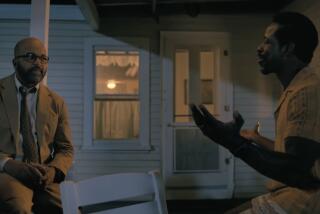Shelf Life: ‘The Reason Why’ by Cecil Woodham-Smith
During the men’s European runway shows this summer, I overheard a fashion editor describing a military history book he’d read. “The commanding officers in the British army at the time of the Crimean War were dandy aristocrats who were more concerned with one-upping each other with over-the-top uniforms and military regalia than they were with military strategy,” he said.
With the cardinal-red military jacket, blue sash and chest full of medals worn by Prince William during his April nuptials to Kate Middleton fresh in my mind, I was intrigued and inquired further.
The book the editor had referred to is “The Reason Why: The Story of the Fatal Charge of the Light Brigade” by Cecil Woodham-Smith (Constable, 1953), and it focuses on the contentious relationship between the seventh Earl of Cardigan and the third Earl of Lucan, their obsession with the details of their station and the trappings of military regalia rather than with any actual fighting.Their conflict came to a head on the battlefield in the 1854 Battle of Balaclava and the infamous cavalry charge immortalized by in Alfred Lord Tennyson’s poem “The Charge of the Light Brigade.”
Now, while the male wardrobe owes much to the military (trench coats, epaulets, the blazer), one would be hard-pressed to find a single more sartorially significant campaign. The aforementioned Earl of Cardigan is the one in whose honor the coat-type cardigan sweater was named, his commanding general, Lord Raglan, who had lost an arm at the battle of Waterloo, is the namesake of the raglan sleeve, and the knit ski mask-type head gear known as the balaclava takes its name from the battle.
So the notion that a fascination with fashion may have played a part in the famously mismanaged military maneuver (the British casualties were extremely high and the battle didn’t do much to advance their position against the Russians) was too intriguing to pass up. I soon tracked down a copy (it’s readily available both online and at the Los Angeles Public Library).
One would be hard-pressed to find a work of history crammed with more bed-hopping and bursts of bombast than the dense opening chapters of “The Reason Why.” But Woodham-Smith’s somewhat labored attempt at fleshing out the main characters — brothers-in-law Lt.-Gen. James Thomas Brudenell (a.k.a. the seventh Earl of Cardigan) and Field Marshal George Charles Bingham (the third Earl of Lucan) — is worth it since their behavior when they head into battle for the first time wouldn’t otherwise be the least bit believable — even as fiction.
Foreshadowing anecdotes include an 1833 court-martial involving the issue of new stable jackets, a blow-up over a banned bottle of porter on a banquet table, and a long-simmering animosity that played out through the micromanagement of and obsession over every last detail of training, clothing and preparing the troops.
And what uniforms they were. For example, Woodham-Smith describes the uniforms of the 11th Hussars, a regiment under the command of Lord Cardigan, as follows: “They wore overalls {trousers} of cherry colour, jackets of royal blue edged with gold, furred pelisses, short coats, worn as capes, glittering with bullion braid and gold lace, [and] high fur hats adorned with brilliant plumes.”
Apparently, the author was far from alone in her breathless descriptions, and she quotes a newspaper of the day commenting on the same uniforms: “The brevity of their jackets, the irrationality of their headgear, the incredible tightness of their cherry coloured pants altogether defy description; they must be seen to be appreciated.”
In the end, the fashion editor I overheard had it partly right — though the fashion fixation was less a root cause of the blunder of a military campaign that takes place in the final chapters and more a symptom of it.
And while it may seem like the battlefield shenanigans of aristocratic dandies more than a century and a half ago would have little relevance, Woodham-Smith closes by positing, more or less, that the look, feel and organization of today’s military — in the U.K. and here in the U.S. — follow from the fateful charge of the Light Brigade.
Which, as ourmilitary involvement abroad itself advances toward the decade mark, actually makes it more relevant than ever.
Tschorn covers fashion for The Times.
More to Read
Sign up for our Book Club newsletter
Get the latest news, events and more from the Los Angeles Times Book Club, and help us get L.A. reading and talking.
You may occasionally receive promotional content from the Los Angeles Times.







